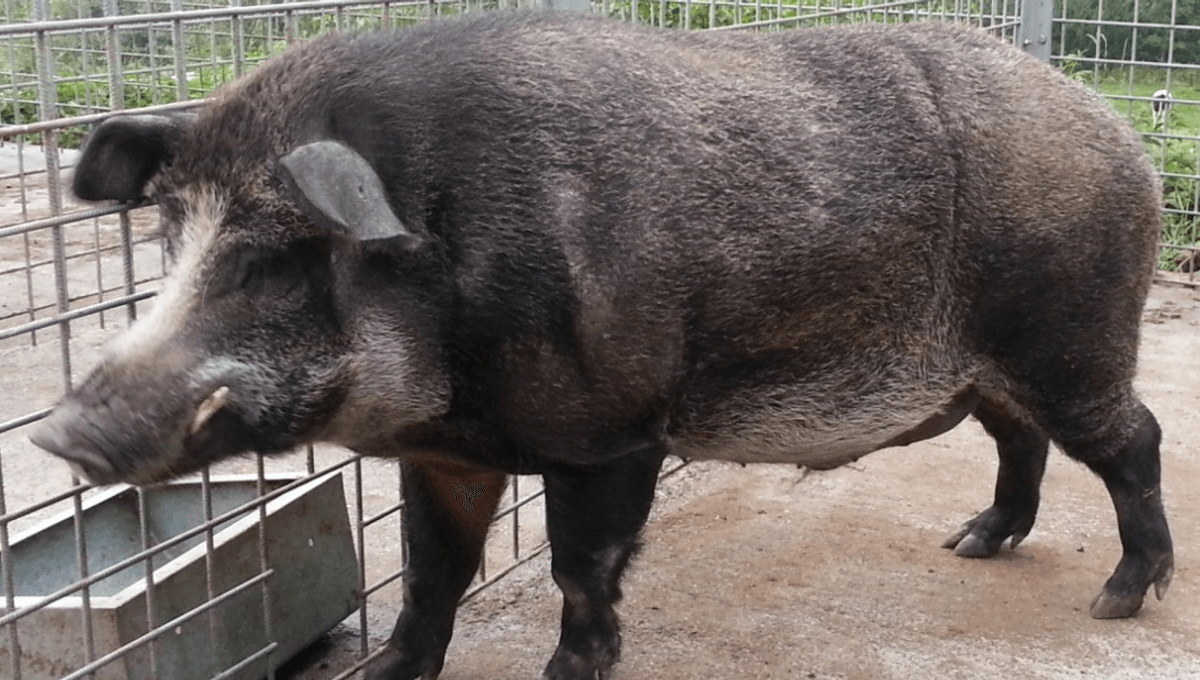
A group of “super-pigs” appear to be traveling down from Canada to northern US states and could pose a significant threat to native wildlife. These animals are a hybrid between domestic pigs and wild boars, a blend that’s resulted in a highly intelligent and hardy animal that’s very difficult to get rid of.
The US is no stranger to swine-based threats, currently home to around 6 million wild pigs despite them not being native to the region. They were introduced back in the 16th century, and according to Fortune amount to around $2.5 billion in damage annually. With the arrival of super-pigs in the north, that cost could soon increase.
While pigs are nothing new, the arrival of the super-pigs is sparking fresh concern because of their capacity to survive in frozen landscapes. In the past, the cool temperatures of the tip of the US have put pigs off making a home here – but for the super-pig, a deep freeze is no big deal.
This is because of their genetic makeup, which is a recipe made up of parts domestic pig and parts wild boar. They were bred by farmers in Canada, writes Field And Stream, giving rise to big-bodied pigs that are much hardier to cold, so could survive and reproduce at temperatures that might’ve killed off typical livestock. While they started out in captivity, a drop in the market for boar meant many were released.
“That they can survive in such a cold climate is one of the big surprises of this issue. The Prairie Provinces are where we have the coldest winters in Canada except for the very far north,” Dr Ryan Brook, who leads the University of Saskatchewan’s Canadian Wild Pig Research Project, told Outdoors.
“One of the things they do to survive is a tunnel under the snow. They go into a cattail marsh and channel into the soft snow and cut nests in the cattails. If you go early in the morning on a cold day, you can actually see steam pouring out the top of the nests.”
Where super-pigs become a problem is that they don’t play nicely with native species. Not only do they represent significant competition for resources, but they’re also partial to predating on the nests of several species, including turkeys.
Wild animals can act like reservoirs for disease as we saw in the COVID-19 pandemic – and the farther illnesses spread among wild groups, such as the avian flu outbreak, the greater chance they have of spilling over into humans. As such, controlling invasive species like the super-pig is a matter of human health, as well as the health of ecosystems.
The super-pigs are just doing what they need to survive, but when humans play a part in releasing a threat we owe it to delicate ecosystems to try and undo the mistake. Unfortunately, when it comes to wild pigs, that is no mean feat.
“Wild pigs are easily the worst invasive large mammal on the planet,” Brook told The Guardian.
“They’re incredibly intelligent. They’re highly elusive, and also when there’s any pressure on them, especially if people start hunting them, they become almost completely nocturnal, and they become very elusive – hiding in heavy forest cover, and they disappear into wetlands and they can be very hard to locate.”
Source Link: "Super Pigs" Are Coming For The US